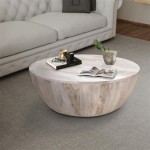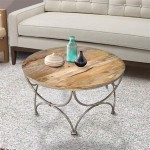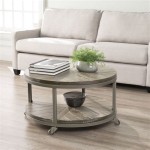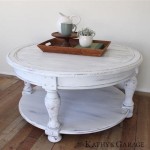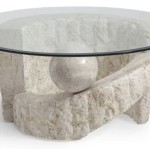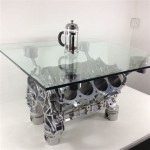How to Make a Small Table at Home
Crafting a small table at home offers a fulfilling DIY project and the satisfaction of creating a functional piece that complements your living space. Whether you want to add a stylish accent to your living room, a cozy side table for your bedroom, or a practical workspace for your home office, building a small table is achievable with basic woodworking skills and readily available materials. This article will guide you through the process of constructing a small table, highlighting key steps and essential considerations.
1. Design and Planning
Before diving into construction, it's crucial to have a clear plan and design for your table. Consider these aspects:
- Purpose and Size: Define the table's primary use and determine the appropriate dimensions. A coffee table will have larger dimensions than a bedside table.
- Style and Design: Explore different table styles and designs. Do you prefer a rustic, modern, or minimalist aesthetic? The chosen style will influence the materials, shape, and overall look.
- Materials: Select materials that align with your design and desired durability. Common options include wood, plywood, metal, or a combination of these.
- Hardware: Choose suitable hardware for assembling the table, including screws, brackets, and possibly hinges for a foldable table design.
Creating a simple sketch or a digital model can help visualize the final design. By carefully planning the design and gathering the necessary materials and tools, you'll set yourself up for a successful table-building experience.
2. Cutting and Preparing the Materials
With your design finalized, it's time to cut and prepare the wood for the table. First, cut the wood to the desired dimensions. You can purchase pre-cut lumber or use a saw to cut the wood yourself.
Here's a quick breakdown of the steps:
- Measure twice, cut once: Accuracy is critical for a well-constructed table. Measure carefully and mark the cut lines before making any cuts.
- Use appropriate tools: Employ the right tools for your project, such as a table saw, circular saw, or hand saw for making precise cuts.
- Sand the edges: Smooth any rough edges or splinters by sanding the cut surfaces. This ensures a safe and aesthetically pleasing finish.
- Prepare the surface: If desired, apply a sealant or stain to protect the wood and enhance its appearance.
Remember to wear safety glasses and gloves throughout the cutting and preparing process. These precautions will prevent injuries and ensure smooth progress for your project.
3. Assembling the Table
Now, it's time to bring the table together. This involves securely attaching the table legs, top, and any additional structural elements. Here's a general approach to table assembly:
- Secure the legs: Attach the table legs to the tabletop using screws, brackets, or dowels. Ensure they are securely fastened and level.
- Add supports (if necessary): If your table design includes a shelf or additional support, attach these components next.
- Pre-drill holes: Before driving any screws, pre-drill pilot holes to prevent the wood from splitting.
- Use clamps for added support: Clamp the table parts together while securing them with screws to ensure a sturdy and aligned assembly.
After completing the assembly, check for stability and adjust any loose components.
4. Finishing Touches
Once the table is assembled, you can add finishing touches to personalize and enhance its appearance. Here are some finishing techniques you can consider:
- Sanding: Sand the entire table surface to achieve a smooth and even finish. Using different grit sandpaper will help you achieve the desired level of smoothness.
- Staining: Apply a wood stain to give the table a rich color and enhance its natural grain patterns. Choose a stain color that complements your home's décor.
- Sealing: Protect the table from spills and wear by applying a sealant. There are various sealant types, including polyurethane, varnish, and wax, each with its own properties.
- Hardware and accessories: Add decorative hardware, such as knobs or pulls, to accentuate the table's design. You can also consider adding a table runner, placemats, or other accessories to complete the look.
Remember to let each coat of stain or sealant dry completely before applying the next, following the manufacturer's instructions. By taking care with the finishing touches, you'll ensure a durable and aesthetically pleasing small table for your home.

Diy Fluted Side Table Tutorial Scotshill House

Diy Wood Circle Side Table Liz Marie Blog

22 Easy Diy Bedroom Side Tables You Can Make Yourself Home And Garden

More Like Home Simple Four Poster Coffee Table Plans Day 1

How To Make A Faux Driftwood Coffee Table In Few Easy Steps

Diy Pallet Coffee Table Liz Marie Blog

How To Make A Papier Mache Side Table 11 Steps With Pictures Instructables

Homemade Modern Ep15 Concrete Wood Coffee Table

13 Awesome Diy Dining Tables For Small Spaces Ohmeohmy Blog

Day 22 Build A Craftsman Style End Table Diy Tables Furniture Plans High Top
Related Posts


